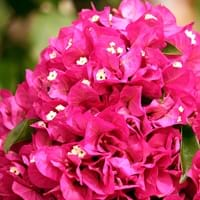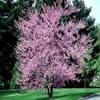Life Span
Perennial
Perennial
Type
Flowering Plants, Grass, Shrubs
Shrub
Origin
Central America, North America
Hybrid origin
Types
Not Available
Brasilensis, Easter Parade, Formosa, Rosenka (Orange), James Walker, Jubilee Showlady, Barbara Karst, Elizabeth Angus
Number of Varieties
Not Available
Habitat
Temperate Regions, tropical environments
Rainforest, Tropical rainforest
USDA Hardiness Zone
7-10
9-11
AHS Heat Zone
Not Available
12-11
Sunset Zone
Not Available
22, 23, 24
Habit
Upright/Erect
Cushion/Mound-forming
Flower Color
Pink, Red, White, Yellow
Gold, Magenta
Flower Color Modifier
Bicolor
Not Available
Fruit Color
Black, Green
Brown, Green
Leaf Color in Spring
Green, Dark Green
Dark Green
Leaf Color in Summer
Dark Green
Dark Green
Leaf Color in Fall
Yellow green
Dark Green
Leaf Color in Winter
Dark Green
Dark Green
Leaf Shape
Egg-shaped
Tubular
Plant Season
Fall, Late Summer, Mid Summer
Spring, Summer, Fall, Winter
Sunlight
Full Sun
Full Sun
Type of Soil
Loam, Sand
Clay, Loam, Sand
The pH of Soil
Neutral, Slightly Acidic, Slightly Alkaline
Acidic, Neutral, Alkaline
Soil Drainage
Well drained
Well drained
Bloom Time
Early Fall, Late Summer, Mid Summer
Indeterminate
Where to Plant?
Container, Ground, Pot
Ground
How to Plant?
Seedlings
Grafting, Stem Planting, Transplanting
Plant Maintenance
Low
Medium
Watering Requirements
Do not water excessively
Medium
In Summer
Lots of watering
Lots of watering
In Spring
Moderate
Moderate
In Winter
Average Water
Average Water
Soil pH
Neutral, Slightly Acidic, Slightly Alkaline
Acidic, Neutral, Alkaline
Soil Type
Loam, Sand
Clay, Loam, Sand
Soil Drainage Capacity
Well drained
Well drained
Sun Exposure
Full Sun
Full Sun
Pruning
Cut back old stems to the ground
Cut or pinch the stems, Prune for shortening long shoots, Prune if you want to improve plant shape, Prune in the late winter or spring, Prune prior to new growth, Prune to control growth, Remove dead or diseased plant parts
Fertilizers
as it is a flowering plant, use high phosphorous content fertilizer
All-Purpose Liquid Fertilizer
Pests and Diseases
Aphids, Slugs
Aphids, Leaf spot, Mealybugs, Red spider mite, Root rot, Whiteflies
Plant Tolerance
Drought
Drought
Flower Petal Number
Single
Single
Foliage Texture
Coarse
Medium
Foliage Sheen
Matte
Matte
Attracts
Bees, Butterflies
Hummingbirds
Allergy
Not Available
Itchiness, Skin rash
Aesthetic Uses
Showy Purposes, small hedge
Showy Purposes, Used for decorating walls, fences, gates, hedges, etc.
Beauty Benefits
Making cosmetics
Not Available
Environmental Uses
Not Available
Air purification
Medicinal Uses
anti-inflammatory, Aphrodisiac, Diuretic, Purgative, Vulnerary
Not Available
Part of Plant Used
Flowers, Leaves
Whole plant
Other Uses
Edible dye
Showy Purposes
Used As Indoor Plant
No
No
Used As Outdoor Plant
Yes
Yes
Garden Design
Container, Edging, Feature Plant, Foundation, Wildflower
Container, Foundation, Groundcover, Hedges, Mixed Border, Rock Garden, Wall, Tropical
Botanical Name
Mirabilis jalapa
BOUGAINVILLEA 'Helen Johnson'
Common Name
marvel of peru, four o'clock flower
Bougainvillea
In Hindi
Mirabilis jalapa
Bougainvillea
In German
Wunderblume
Bougainvillea
In French
Belle-de-nuit
Bougainvilliers
In Spanish
Dondiego de noche
Bougainvillea
In Greek
mirabilis Jalapa
Bougainvillea
In Portuguese
Maravilha
Bougainvillea
In Polish
mirabilis Jalapa
Bugenwilli
In Latin
mirabilis Ja-
Bougainvillea
Phylum
Magnoliophyta
Spermatophyta
Class
Magnoliopsida
Dicotyledonae
Order
Caryophyllales
Caryophyllales
Family
Nyctaginaceae
Nyctaginaceae
Genus
Mirabilis
Bougainvillea
Clade
Angiosperms, Core eudicots, Eudicots
Angiosperms, Core eudicots, Eudicots
Tribe
Not Available
Not Available
Subfamily
Not Available
Not Available
Number of Species
Not Available
Season and Care of Mirabilis Jalapa and Bougainvillea
Season and care of Mirabilis Jalapa and Bougainvillea is important to know. While considering everything about Mirabilis Jalapa and Bougainvillea Care, growing season is an essential factor. Mirabilis Jalapa season is Fall, Late Summer and Mid Summer and Bougainvillea season is Fall, Late Summer and Mid Summer. The type of soil for Mirabilis Jalapa is Loam, Sand and for Bougainvillea is Clay, Loam, Sand while the PH of soil for Mirabilis Jalapa is Neutral, Slightly Acidic, Slightly Alkaline and for Bougainvillea is Acidic, Neutral, Alkaline.
Mirabilis Jalapa and Bougainvillea Physical Information
Mirabilis Jalapa and Bougainvillea physical information is very important for comparison. Mirabilis Jalapa height is 60.00 cm and width 50.00 cm whereas Bougainvillea height is 76.20 cm and width 910.00 cm. The color specification of Mirabilis Jalapa and Bougainvillea are as follows:
Mirabilis Jalapa flower color: Pink, Red, White and Yellow
Mirabilis Jalapa leaf color: Green, Dark Green
Bougainvillea flower color: Gold and Magenta
- Bougainvillea leaf color: Dark Green
Care of Mirabilis Jalapa and Bougainvillea
Care of Mirabilis Jalapa and Bougainvillea include pruning, fertilizers, watering etc. Mirabilis Jalapa pruning is done Cut back old stems to the ground and Bougainvillea pruning is done Cut or pinch the stems, Prune for shortening long shoots, Prune if you want to improve plant shape, Prune in the late winter or spring, Prune prior to new growth, Prune to control growth and Remove dead or diseased plant parts. In summer Mirabilis Jalapa needs Lots of watering and in winter, it needs Average Water. Whereas, in summer Bougainvillea needs Lots of watering and in winter, it needs Average Water.





